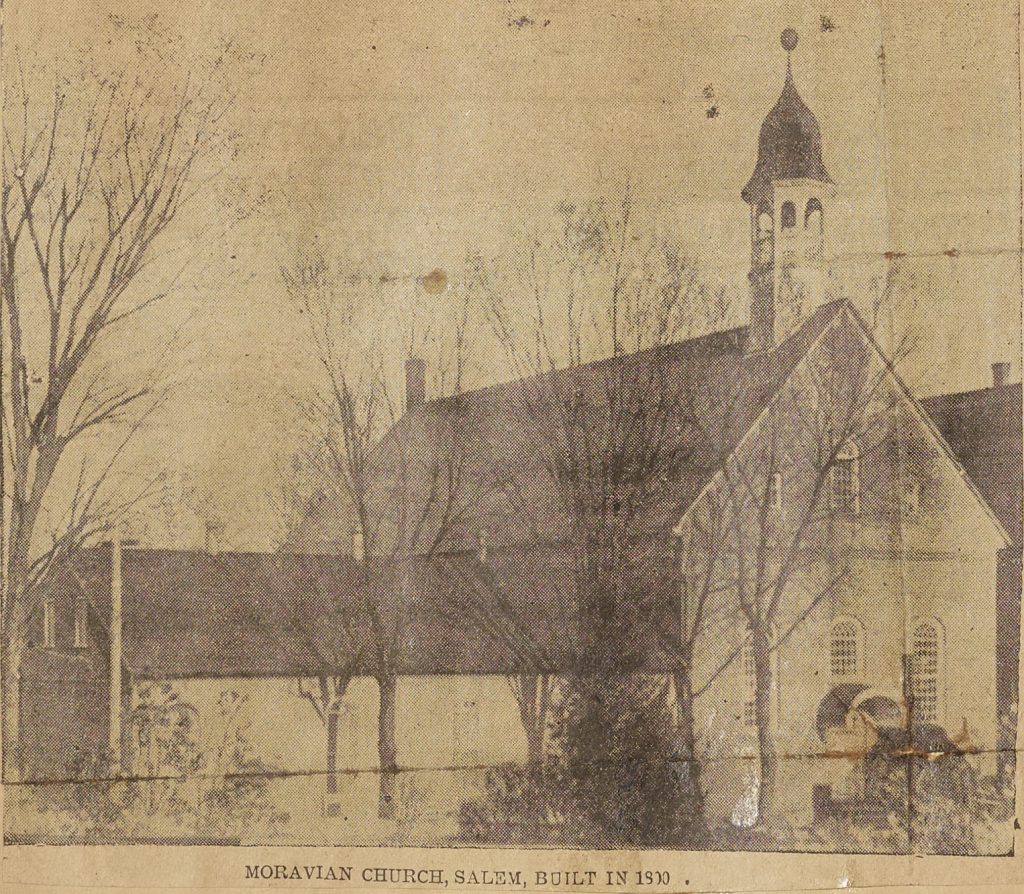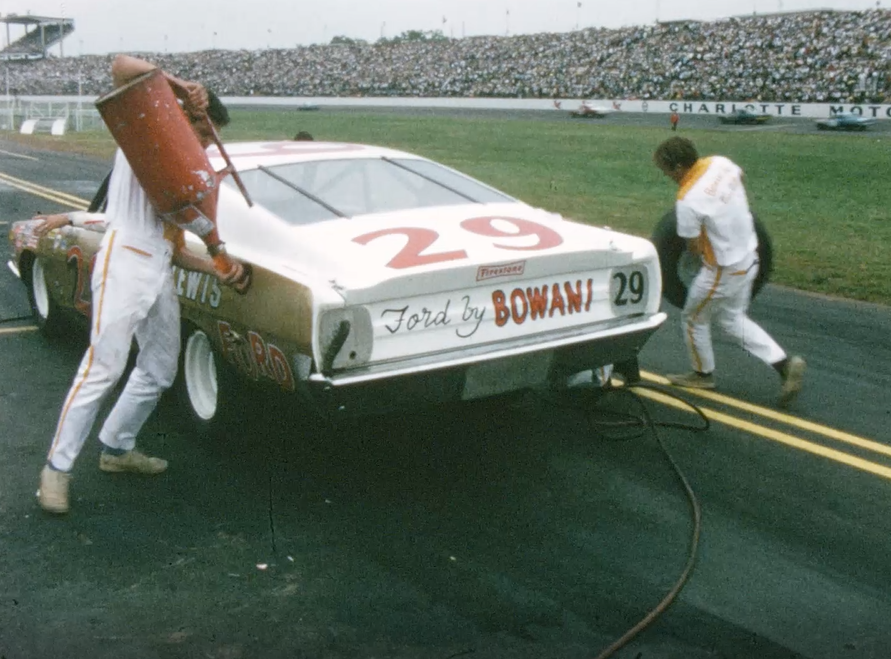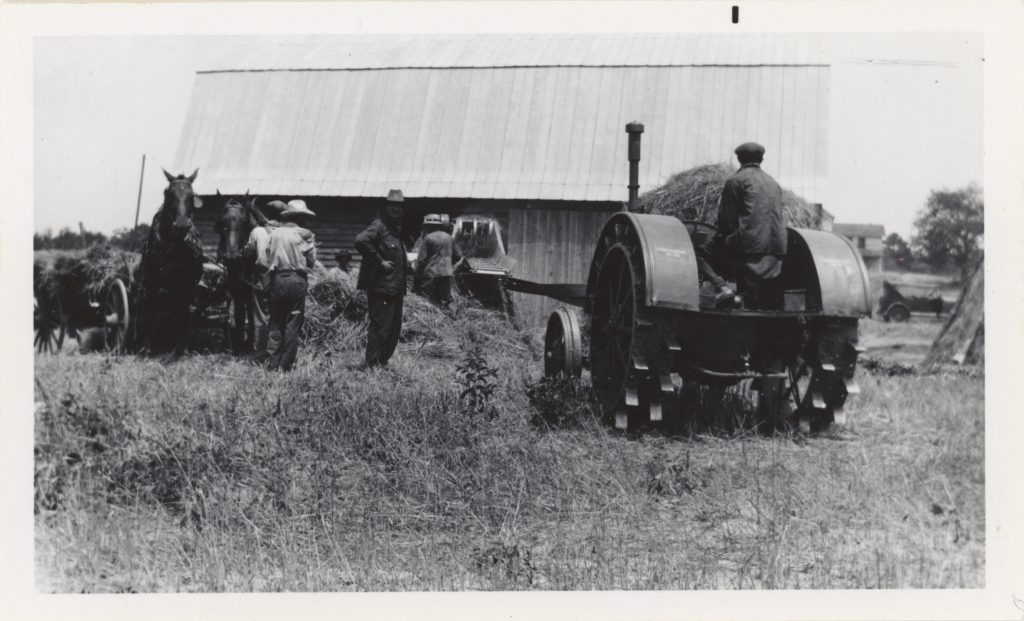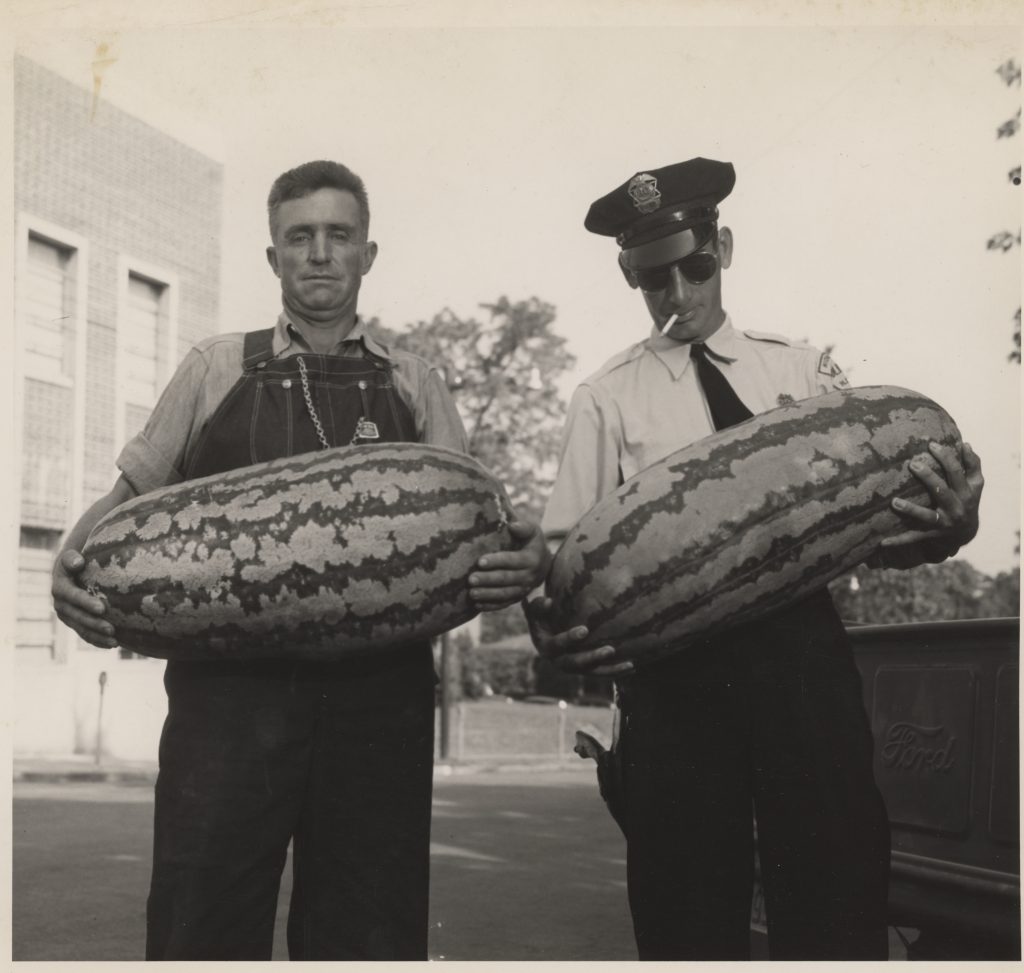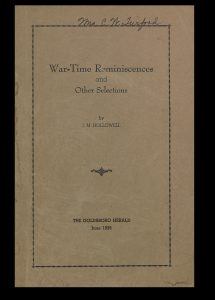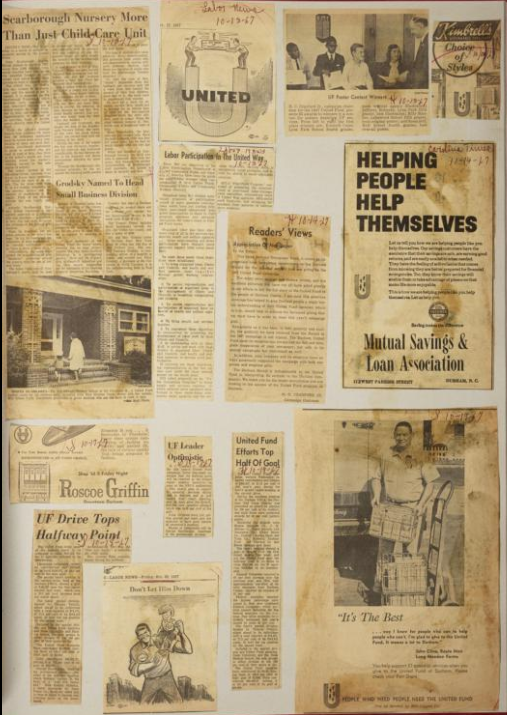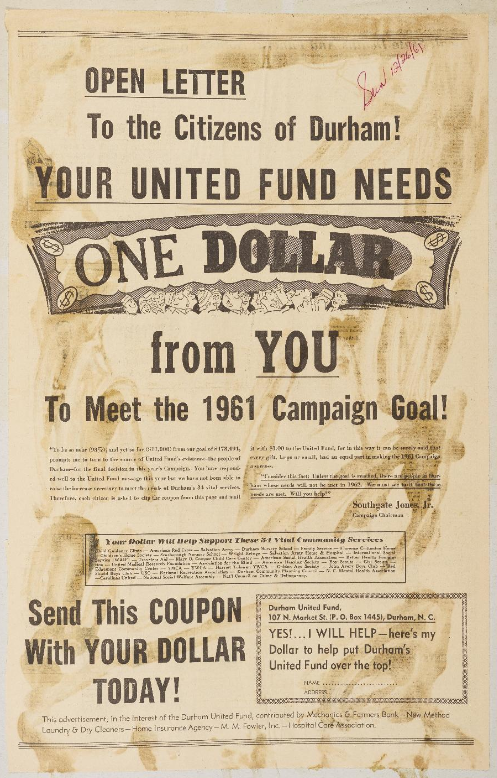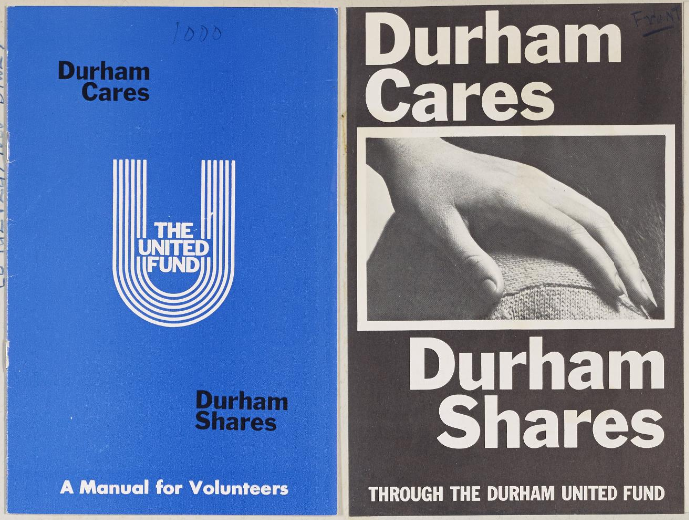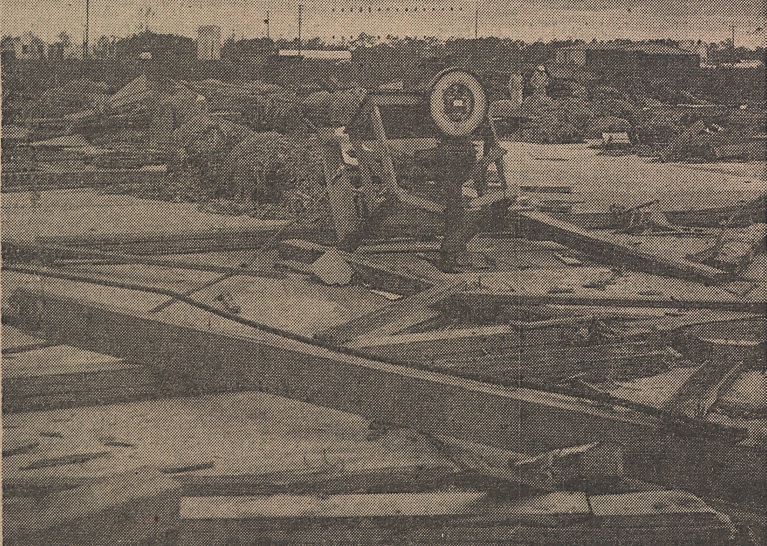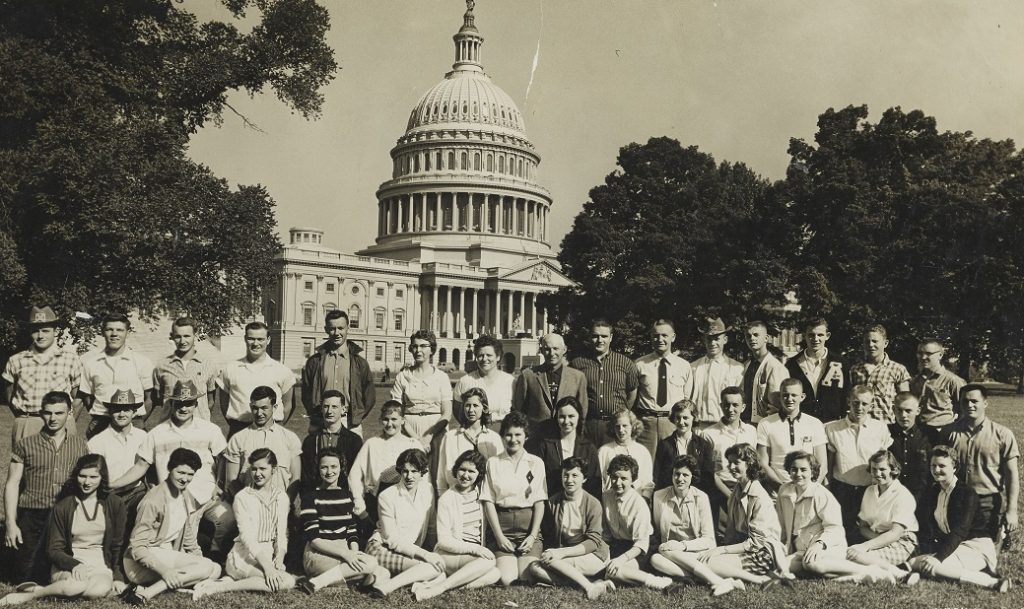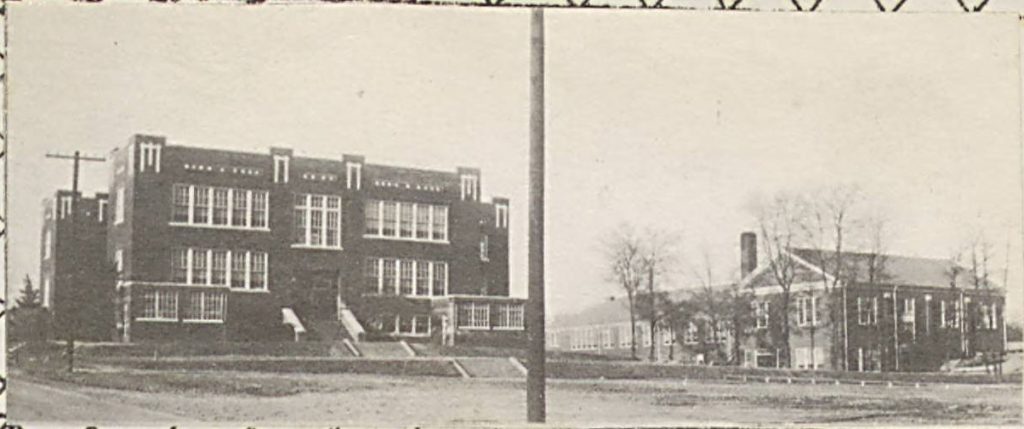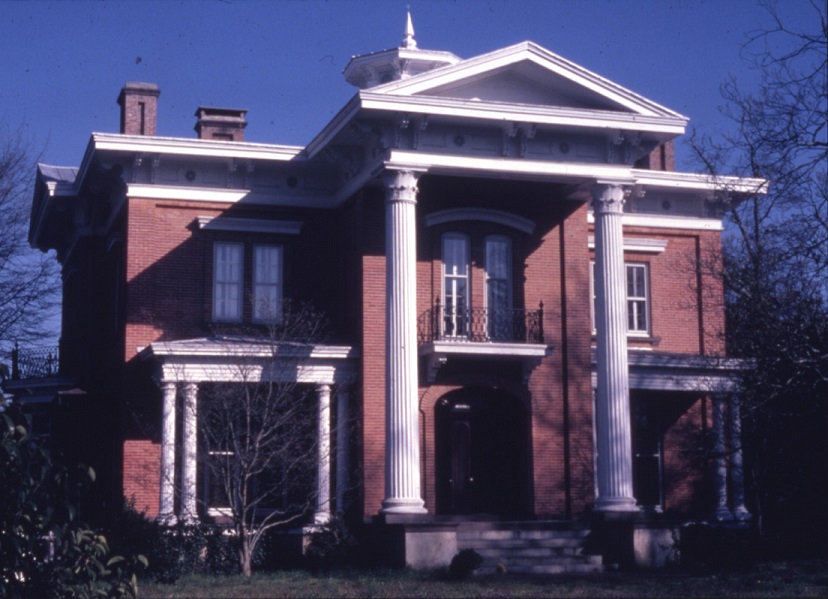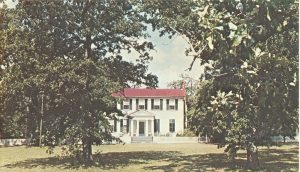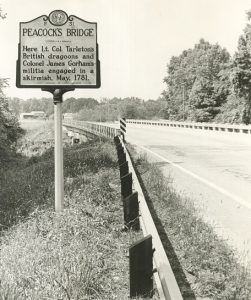50 years ago on July 19, 1969 , the Apollo 11 entered lunar orbit and hours later on July 20, Neil Armstrong and Buzz Aldrin landed the lunar module the Eagle on the surface of the moon. It was there Armstrong famously said “One small step for man, one giant step for mankind.” The moon landing was watched with bated breath by the entire nation, which had been engaged throughout the 1960s in an intense “space race” with the Soviet Union during the height of the Cold War. The landing also fulfilled the promise President John F. Kennedy had made in a famous speech in 1962 that before the decade was out, America would go to the moon.
Many resources on DigitalNC show how North Carolinians celebrated the moon landing and how they viewed it in relation to the space race.

Poem written by the editor of the New Bern Mirror commemorating the moon landing
The front page of the New Bern Mirror published the Friday after the landing described how many of New Bern’s citizens were glued to their televisions to watch the grainy footage come back to Earth of Aldrin and Armstrong, starting off with “Like us, you’ll find it hard to believe, but there were New Bernians who didn’t have their television sets turned on Sunday afternoon and night.” and later referring to the event as the biggest thing since “Christ rose from the dead.” The front page spread also included a poem by the editor of the paper about the landing.
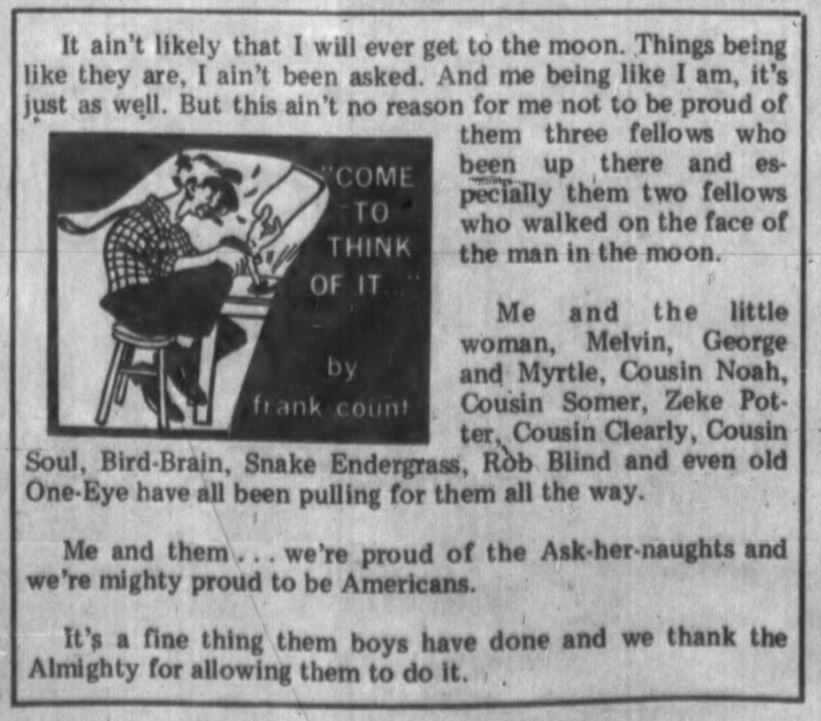
Frank Count, a well known local columnist for the Franklin Times’ take on the moon landing.
The Franklin Times had a full page spread about the landing in their July 22, 1969 issue, pulling in not only national press materials but also including a short Frank Count column stating “Me and them…we’re mighty proud of the Ask-her-naughts and we’re mighty proud to be Americans.”

Headline from the Carolina Times published after the moon landing.
Some publications took a slightly different tone; while being inspired by the scientific feat of getting to the moon, the Carolina Times, the African-American paper in Durham, noted that while it was great the United States got to the moon, on Earth there were still wars being fought, people in extreme poverty, and many other unresolved problems. The editor closed the editorial wishing for Americans to be inspired to think differently and broader now that they knew they could reach the moon. “The moon landing undoubtedly dramatized the rapidity of change in the world and may therefore encourage new approaches, new attitudes, and new policies toward contemporary problems. In a way, this great achievement focused the mind of the entire race on a single event and said to the world what Lincoln said to the American people in 1862. ‘As our case is new, we must think anew and act anew. We must dis-enthrall ourselves and then we shall save our country.'”
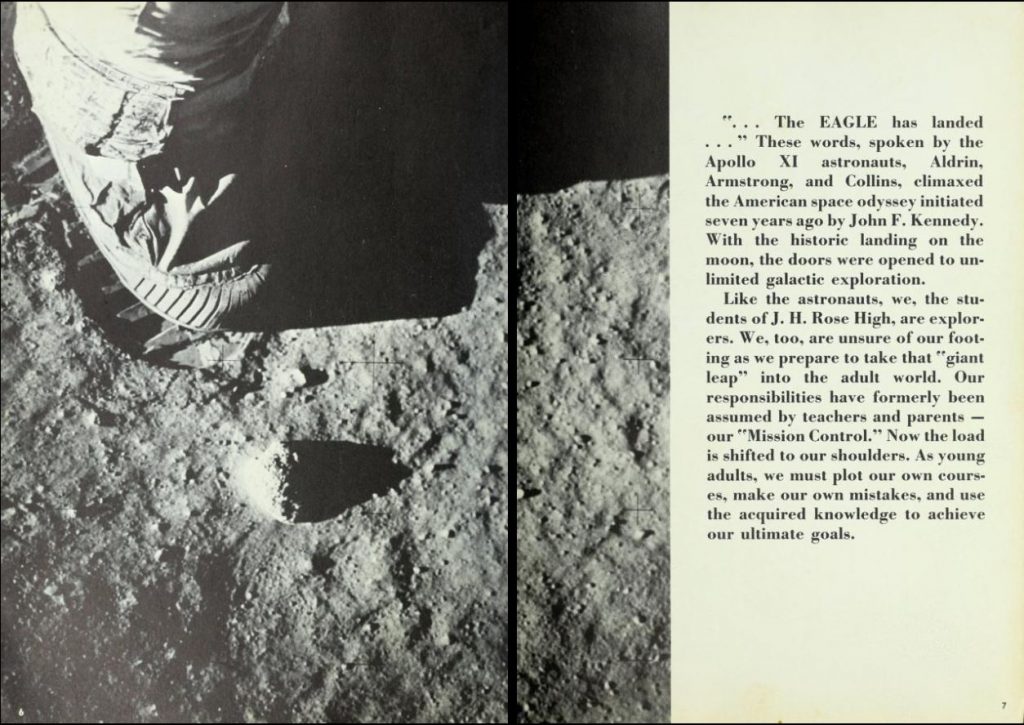
Introduction of the 1970 Junius Rose High School yearbook.
Showing the landing still had an impact a year later, a 1970 yearbook from Junius Rose High School in Greenville, NC compared the graduates of Rose High School to the astronauts who landed on the moon and commented on their next move to make “a giant leap” into adulthood as they leave high school behind.
This is just a small sampling of the many reactions in the newspapers in communities across the state, as well as other materials on our site related to interest in the space race and Cold War, which you can look at here. The overwhelming feeling from almost all of them is a strong pride in being American and thus a part of this great scientific achievement and a sense that now anything was possible for the country.
